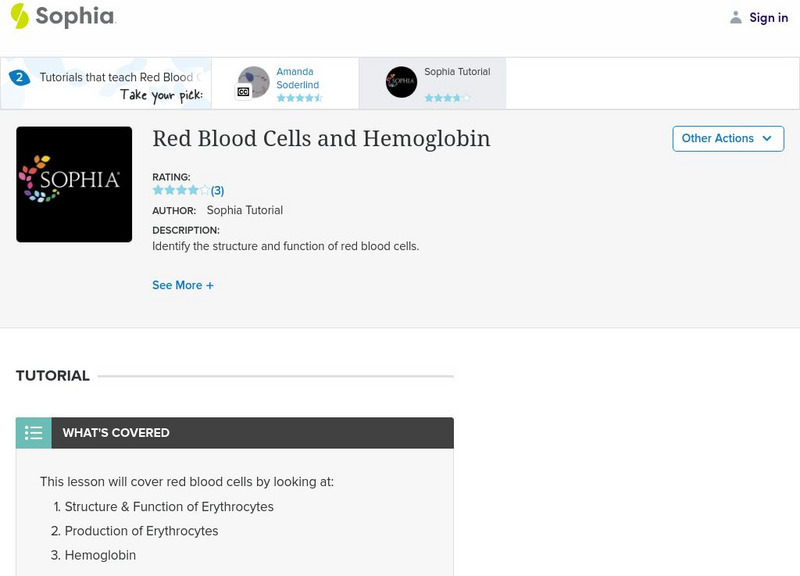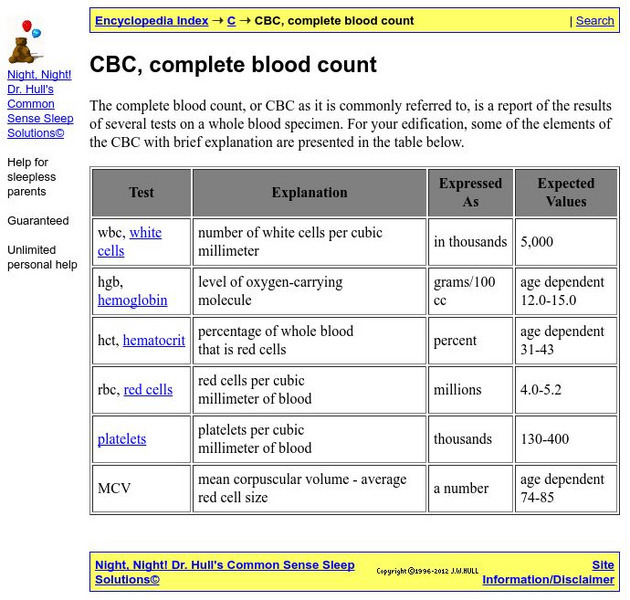Hi, what do you want to do?
Curated OER
Human Blood: Microviewer
In this human blood: microviewer activity, students answer questions about blood, red blood cells, white blood cells, phagocytosis, blood type B, fibrin, sickle cells, and infected blood. Students also draw quick sketches of a human...
Curated OER
Red Gold-The Epic Story of Blood
For this blood worksheet, students watch a video called "The Epic Story of Blood" and answer 24 questions about the creation of blood, how it is produced, blood donation, blood banks and transfusions. Students take an short quiz about...
Curated OER
Osmosis
In this biology worksheet, students determine how many solvent and solute molecules there are in the red blood cell and the IV fluid. Then they determine whether the IV fluid is hypertonic, hypotonic, or isotonic to the red blood cell.
Curated OER
Explore Rx Quiz
In this exploring prescriptions instructional activity, students answer 6 multiple choice questions related to diseases, medicine, the human body and poisonous plants. Students use an on line web site that gives them an immediate score.
Curated OER
Our Systematic Body
Students explore several parts of the body system in the eight lessons of this unit. Through several hands-on activities, the skeletal, muscular, digestive, circulatory and nervous systems are observed.
Curated OER
Measuring Evolution of Populations
The Hardy-Weinberg principle is the focus of this concise slideshow. Some vocabulary definitions are given on the first 2 slides, and the rest are given over to examples of the Hardy-Weinberg theorem. Calculations of the H-W...
Curated OER
Inside Story: Your Body, Your Health
Young scholars research about different genetic disorders. In this biology lesson, students create a poster highlighting facts about the disorder. They present their findings in class.
Curated OER
Circulatory System,
Fourth graders study the components and physiology of the human circulatory system.
Curated OER
Pea Brain! Explorations in Estimation
Learners estimate how many peas fit in a container. In this science lesson plan, students calculate the weight of a pea and record it. They use this data to calculate how many peas fit in a human brain.
Curated OER
Measuring Evolution of Populations
The five agents of evolutionary change are reviewed in this slideshow. Definitions of common terms involved with populations and equilibrium are given, and there are some presentations of Hardy Weinberg equations for common examples of...
Curated OER
Biology Trivia Questions
Students answer 71 questions about a variety of topics in biology. In this biology trivia lesson plan, students use the internet to find the answer to questions about the systems of the body, their structures and functions, the different...
Curated OER
Percents and Money
In this algebra worksheet, students rewrite word problems using algebraic symbols. They solve for the amount of population or money over a period of time. There are 10 questions with an answer key.
Curated OER
The Racing Heart
Fifth graders locate their own pulse rate from their carotid or radial artery, and graph their pulse rates after completing various exercise activities. They graph their data on a pie graph using Microsoft Excel software.
Curated OER
Circulatory System
In this circulatory system worksheet, learners use an internet program to observe the circulatory system and answer short answer questions about it. Students complete 21 short answer questions.
Curated OER
HOW SMALL AM I? THE SCIENCE OF NANOTECHNOLOGY
Students study nanotechnology and investigate the dimensions of a nanoscale. In this nanometer study lesson students will see how truly small a nanometer is by measuring things such as a piece of hair.
Curated OER
Operating the spectrophotometer
Working in small groups, pupils explore the operation of spectrophotometer. Using the spectrophotometer, they investigate Beer's Law with everyday items.
Curated OER
Observation and Discovery
Young scholars explore the basic skills guiding sound scientific invvestigation and methodology. They are introduced to a powerful scientific tool-the microscope. Students review the parts of the microscope. They discuss the inventor...
Sophia Learning
Sophia: Red Blood Cells and Hemoglobin
This lesson will examine the structure and function of red blood cells (i.e., erythrocytes), how new red blood cells are produced, and the role of hemoglobin in transporting oxygen.
WebMD
Web Md: Complete Blood Count (Cbc)
This site from WebMD provides an extremely detailed description of a complete blood count, how it is taken, what it measures, and what the results tell you. Links to important terms within the text and a chart that shows average amounts...
Other
Dr. Hull: Parents' Common Sense Encyclopedia: Cbc, Complete Blood Count
Chart giving the normal ranges in a complete blood count or CBC. Looks at white blood cells, hemoglobin, hematocrit, red blood cells, platelets, and average red cell size. Click on highlighted terms for more information about them.
TeachEngineering
Teach Engineering: Simple Coulter Counter
Students build and use a very basic Coulter electric sensing zone particle counter to count an unknown number of particles in a sample of "paint" to determine if enough particles per ml of paint exist to meet a quality standard. In a lab...

























